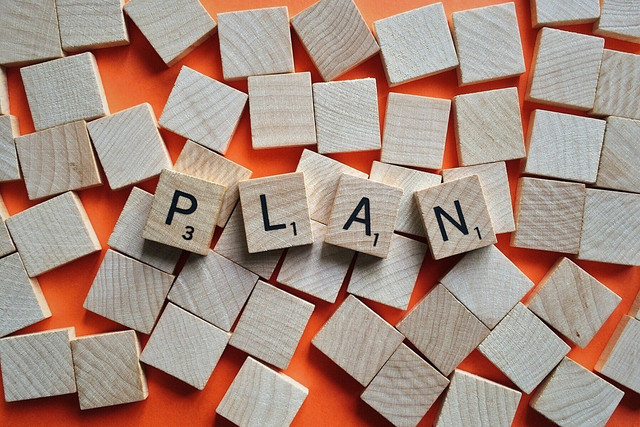Knowing how to set an intention is a valuable skill for many areas of life. We'll walk you through the steps so you can learn more about effective goal-setting!
Intention setting allows you to take charge of your own life and supports you in fulfilling your goals and dreams. It can also be part of your mindfulness routine. But before we’ll get into how to set an intention, you may wonder what intention setting even means and why it is something you should try. Let’s have a closer look together.
What Is Intention Setting and How Does It Benefit Me?



(Foto: CC0 / Pixabay / Wokandapix)
An intention can be defined as something you want to achieve or do, an aim or purpose. It is often the first step in committing to a particular goal. This can apply to everyday situations or bigger goals concerning careers or relationships.
Setting an intention can help you become more present with yourself and in your relationships. If you know how to set an intention, you can hold yourself accountable for your goals and be proactive in pursuing them. This in turn will make you more likely to achieve them. Positive intentions will also benefit positive thinking. Just make sure to be honest to yourself and avoid toxic positivity.
Setting an Intention: Step-by-Step



(Foto: CC0 / Pixabay / mikefoster)
There are many ways to set an intention, but we’ll show you one of the most simple and effective methods. The so-called WOOP method (an acronym that stands for wish, outcome, obstacle, and plan) was introduced and developed by Gabriele Oettingen. WOOP is a science-based mental contrasting method that essentially makes you go through four simple steps.
- Wish: Identify a wish that you have. It should be challenging, but somehow attainable.
- Outcome: Visualize the best outcome as a result of this wish. Try to imagine it as vividly as possible.
- Obstacle: Is there an obstacle that may stand in the way of your wish? Identify and visualize it.
- Plan: Create an if-then plan. Take your obstacle, place it after the word “if” and think of what behavior you can use to overcome the obstacle. Place this after the word “then”. We’ll show you some examples below.
Alternatively to this, setting an intention could be as simple as writing down your aim or desire on paper or repeating the phrase silently in your head. What is important with intention-setting is that you actually believe in your intention, visualize and internalize it. Let’s check how setting an intention could look like in day-to-day life, using the WOOP technique.
1. Dealing With an Important Presentation



(Foto: CC0 / Pixabay / hudsoncrafted)
Do you have a presentation or pitch coming up and want to master it successfully?
- Your wish would sound similar to this: “I want to present my findings confidently and convince the audience.”
- Time to visualize the outcome. Close your eyes and imagine yourself on stage, pay attention to details here. How would you position yourself? What is your body language like? What is the desired reaction of the crowd?
- Think of your obstacle. This could be getting nervous and your voice starting to tremble.
- Create your action plan. For example, you could tell yourself: If I get nervous during the presentation, then I will take a deep breath, drink a sip of water, and move on.
2. How to Set an Intention in Your Job Search
Imagine you want to switch career paths or start your first job. Here’s how you could go about it:
- Your intention could be to find a job that suits your interests and has good pay.
- Visualize how you would like to feel at your new job. Is it remote or in-person? What does the office setting look like? How are your colleagues, and what are your tasks like?
- Now think about what obstacle is standing in your way. This could be: Procrastinating to send out applications.
- Find a solution. For example: If I procrastinate sending out applications, then I will set a specific time daily to send applications, using an alarm clock to remind me of this.
3. Mastering a Difficult Conversation



(Foto: CC0 Public Domain / Unsplash / Nick Fewings)
Whether you want to apologize the right way, set boundaries in a relationship, or set boundaries at work, setting an intention can simplify this situation for you. Let’s imagine an apology scenario.
- Your wish or intention could be to apologize to someone for a false behavior.
- Visualize how the situation plays out to your liking. Imagine how the person accepts your apology and how this will positively affect your relationship.
- Now imagine an obstacle. This could be that the other person does not accept your apology.
- Create a plan. For example: If the other person does not accept my apology, then I will show empathy and give them time to take my words in, instead of panicking right away.
Read More:
- 10 Best Wellness Retreats in the US
- These Are the 8 Limbs of Yoga Explained
- What is Emotional Sobriety & How Can You Achieve It?
Important Information regarding Health-related Topics.
** Links to retailers marked with ** or underlined orange are partially partner links: If you buy here, you actively support Utopia.org, because we will receive a small part of the sales proceeds. More info.Do you like this post?







